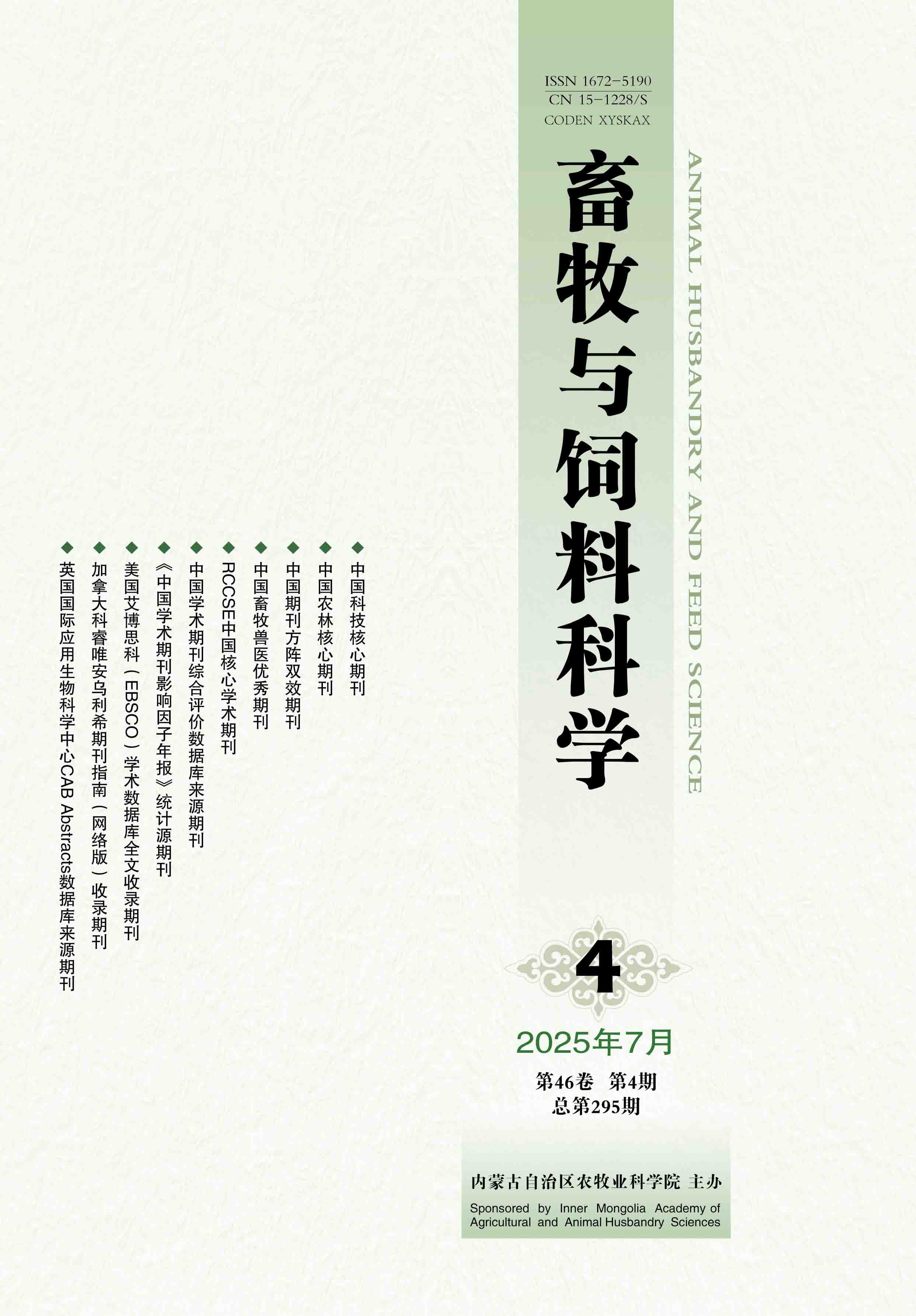Select
Production Performance and Nutritional Quality Effect of Multiple Cropping Oat Grass after Wheat in Hetao Irrigation District
HAO Lin-feng, ZHANG Wen-jing, LIU lin, Bayaertu, LIU Jin-ping, Dalanqiqige
2019, 40(10):
59-64.
doi:10.12160/j.issn.1672-5190.2019.10.012
Abstract
(
232 )
PDF (670KB)
(
47
)
Save
References |
Related Articles |
Metrics
In order to assess the variety adaptability, growth characteristics, yield and nutritional value of multiple cropping oat grass (Avena sativa L.) after wheat, a total of 8 oat grass varieties (Qingyin No.1, Qingyin No.2, Qingyan No.1, Jiayan No.2, Linna, Qinghai Tianyan, Shenglizhe, Tiane) suitable for autumn planting were introduced. The agronomic traits, number of tillers, average width and length of flag leaf, stem diameter, plant height, stem-to-leaf ratio, biomass yield and main nutritive value of various oat grass varieties were determined and compared. The CP content of the same variety during the growth period of 46 days before frosting was higher than the growth period of 76 days, however, the content of NDF, ADF, soluble sugar and fresh and hay yield were lower than the growth period of 76 days; according to the growth rate and height data of 30 days after frosting, the autumn cold-tolerant varieties of Qingyin No.2, Jiayan No.2 and Linna were suitable for multiple cropping after wheat; stem-to -leaf ratio was negatively correlated with CP content and positively correlated with NDF, ADF and soluble sugar; except for the variety of Tiane, positive correlation between the biological yield per unit area and CP, NDF, ADF and total soluble sugar production were observed in the tested oat grass varieties. In conclusion, the varieties with moderate tillering number, high plant height, long and wide leaves, low stem-to-leaf ratio, high total hay yield and high total nutritional value were Qingyin No.2, Jiayan No.2 and Linna.








